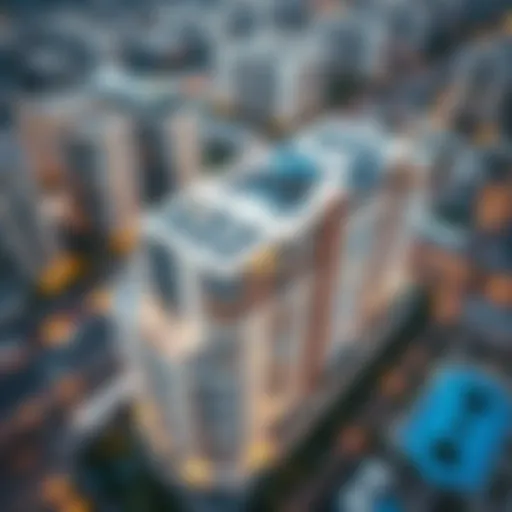Exploring the Open Theatre in Dubai: A Cultural Hub
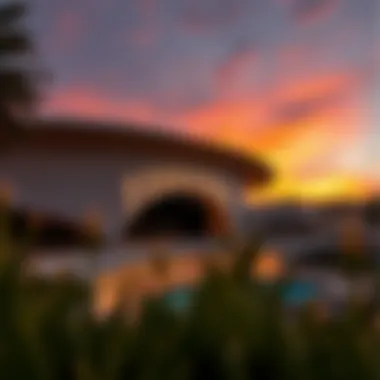
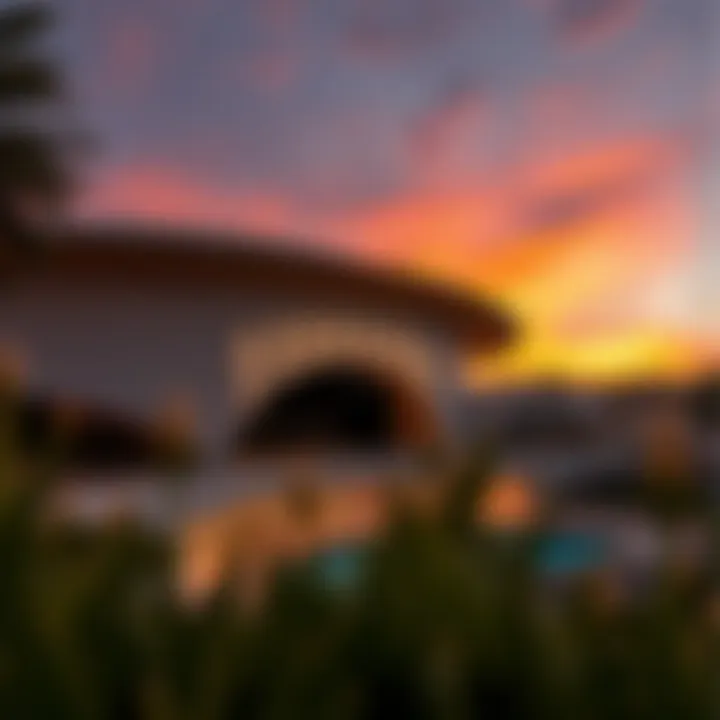
Intro
The Open Theatre in Dubai represents a refreshing blend of innovation and tradition. This venue is not just a space for performances; it’s a vibrant hub that brings together art, culture, and the intricacies of modern architecture. Located in the heart of Dubai, it serves as a testament to the city’s commitment to fostering a rich cultural scene that appeals to both locals and visitors alike. This article takes a comprehensive look at the Open Theatre, emphasizing its importance within the local community and its broader implications for the cultural landscape of Dubai.
From its stunning architectural design to its diverse programming, the theatre has emerged as a significant landmark that draws crowds from all walks of life. The historical roots of open-air performances provide a fascinating context for understanding how this venue has evolved and adapted to meet contemporary needs. We’ll investigate not only the physical aspects of the theatre, including its unique structure and design elements, but also its impact on audience experience and community engagement. Each aspect contributes to a dynamic narrative that enriches the cultural tapestry of the city.
Moreover, the Open Theatre is at a crossroads, integrating the past with the future while attracting a varied audience. As we explore its significance, we will highlight key investment opportunities, current market trends, and future projections that reveal how this venue is poised to play an even larger role in Dubai’s artistic community.
By investigating the theatre's appeal and the experiences it offers, we aim to provide readers with an insightful perspective on its potential influence in fostering cultural appreciation and economic growth.
Market Trends
The Open Theatre is situated in a rapidly evolving cultural landscape, where trends shift at the speed of light. This section aims to break down current observations in the market, alongside what the future may hold for such venues in Dubai.
Current Market Analysis
Currently, the appetite for cultural experiences is robust among both residents and tourists in Dubai. The Open Theatre's programming, which ranges from theatrical performances to concerts and film screenings, caters to diverse interests. The popularity of such events has been on an upswing, with audience turnout often exceeding expectations during peak seasons.
Several elements contribute to this positive market performance:
- Diverse Programming: Offering a variety of performances ensures that there is something for everyone, which attracts larger audiences.
- Architectural Appeal: The stunning design draws in curious visitors who are eager to experience a venue that is as much a piece of art as the performances it hosts.
- Cultural Importance: As a symbol of Dubai's cultural evolution, the theatre creates a sense of pride among locals.
Future Projections
Looking ahead, the Open Theatre is set to play a pivotal role in attracting further investment within the arts sector, reflecting broader societal trends towards cultural sophistication. Trends indicate that open-air venues are gaining traction, especially as audiences seek unique and immersive experiences.
- Growth in Audience Engagement: Anticipated growth in participation from expatriate communities can translate into increased ticket sales and sponsorship opportunities.
- Technological Integration: The integration of advanced technologies, like augmented reality experiences during performances, could elevate audience engagement, enticing a tech-savvy crowd.
- Global Partnerships: Collaborations with international artists and cultural institutions can enhance the theatre’s profile and foster a more global audience.
Investing in culturally significant venues like the Open Theatre could yield substantial returns as the market matures.
With an eye toward the future, investors should consider high-growth areas and key strategies that can harness the potential of this cultural phenomenon. The stage is set, and the theatre could very well be a leading player in Dubai's cultural renaissance.
Foreword to Open Theatre
The concept of Open Theatre represents far more than a mere physical space for performances. It serves as a cultural cornerstone that nurtures community dynamics and collective creativity. Unquestionably, Dubai's Open Theatre stands out, brilliantly acting as a lighthouse that lures international talent while offering a platform for local artists to shine. In this bustling city where contemporary skyscrapers touch the clouds, having a venue that embraces the outdoors is both ingenious and refreshing.
Defining Open Theatre
Open Theatre, at its core, can be described as an outdoor performance venue designed to host various artistic expressions ranging from theatrical plays to live music and dance. This kind of environment encapsulates a sense of freedom that traditional theatres often lack. Picture this: an audience sitting amongst avenues of palm trees, soft breezes filtering through, and the sound of laughter and applause mingling with the rustle of leaves. It transforms performance into an immersive experience where the surroundings become part of the artistry. This type of theatre invites a diverse audience, offering an intimate yet expansive setting that welcomes everyone from local families to international tourists.
The Concept of Outdoor Performance Spaces
The allure of outdoor performance spaces in general is rooted deeply in their ability to create a unique ambiance that indoor venues simply cannot replicate. Open Theatre allows for spontaneity, where all the elements of nature play a role in the overall experience. Think of a summer evening where the stars twinkle overhead, creating a magical backdrop for storytelling and art.
Several factors contribute to the success of these venues:
- Natural Acoustics: The unrestricted sound waves can carry across distances, allowing the audience to fully immerse themselves in the performance without the confines of walls.
- Visual Appeal: Surrounding landscapes and architectural marvels, like Dubai’s impressive skyline, serve as an ever-changing canvas that enhances the theatrical experience.
- Community Engagement: These spaces encourage local participation, bringing together diverse groups through community-focused performances.
To further illustrate, cities worldwide have jumped on the outdoor bandwagon. For instance, venues like the Shakespeare in the Park in New York City or the Sydney Opera House’s outdoor events have paved the way for audiences and artists to gather under the open sky. The experience of witnessing art unfold in such a setting fosters a more profound connection between the creators and the spectators.
Based on the above, it becomes abundantly clear that the Open Theatre in Dubai is not just a place to watch performances; it's a vibrant space connecting art lovers, fostering cultural dialogue, and stimulating local enthusiasm towards the arts.
Historical Context of Theatres in Dubai
Understanding the historical context of theatres in Dubai is pivotal to appreciate the Open Theatre’s role as a cultural phenomena. Theatre doesn't merely provide entertainment; it's a reflection of the societal changes, aspirations, and values. The history of the theatrical arts in Dubai sheds light on how deeply culture is tied to the identity of this vibrant city, presenting an intriguing narrative of evolution and adaptation.
Evolution of Theatre Arts in the UAE
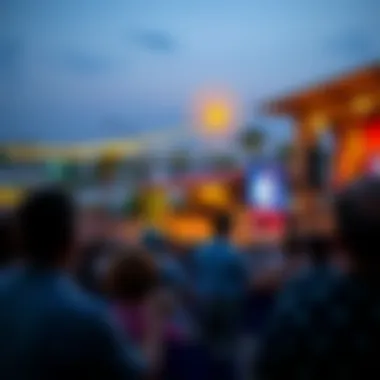

The journey of theatre arts in the United Arab Emirates has been a transformative one. Beginning in the 20th century, theatre in the UAE was largely influenced by oral traditions, with storytelling being a means of relaying cultural anecdotes and important life lessons.
In the 1960s, the first modern plays began to emerge, often imitating Egyptian and Syrian models. Community groups, often composed of volunteers, initiated performances that served both as entertainment and means of educational outreach. Key figures, like the late actor and director Abdul Rahman Al-Awadhi, played a significant role in fostering theatrical interests among the populace. While initially focused on traditional themes, over the years, theatre began to incorporate global narratives.
“Theatre is not just a place; it's a notion of freedom.”
- Influential Theatre Director, Abdul Rahman Al-Awadhi
As the UAE developed, so too did its theatrical framework. The establishment of Dubai Cultural Council in 1986 sparked governmental interest in the arts. This initiation paved the way for the formation of theatrical institutions that encouraged local artists and welcomed international collaborations. Facilities such as the Dubai Community Theatre and Arts Centre further promoted diverse artistic expressions, making way for contemporary works that have successfully captured international attention.
Today, the theatre scene is a melting pot where local narratives blend with global influences, showcasing a diverse array of genres and styles. The emergence of festivals, workshops, and collaborations between international theatre groups has rejuvenated the local arts scene.
Influence of Global Theatre Trends
The influence of global theatre trends on Dubai’s artistic landscape cannot be understated. As the world becomes increasingly interconnected, artistic boundaries fade, allowing cultural exchanges that enrich local traditions. The Open Theatre embodies this dynamic, hosting performances that range from local Emirati productions to internationally acclaimed acts.
One significant trend is the emphasis on multimedia and technology in performances. With Dubai being a global hub of innovation, many local artists have started to incorporate cutting-edge technology into their works, creating immersive experiences for audiences. This evolution not only enhances creativity but also allows performers to reach broader audiences far beyond traditional methods. The integration of digital media with live performances engages a younger demographic, showing strong relevance to today’s societal landscape.
Moreover, environmental considerations in theatre design have been growing priorities in global trends. The Open Theatre’s architecture is a rebuttal to conventional structures, as it harmonizes with the natural landscape while addressing sustainability. The whispers of eco-friendly practices and community-oriented spaces echo the global dialogues on climate consciousness.
With the infusion of various genres—from classical plays to contemporary dance and experimental performances—Dubai has become a platform where narratives from diverse cultures are shared. This enriches the local cultural tapestry and reaffirms that even in a city defined by its rapid development, the subtleties of art and expression hold significant importance.
Understanding this historical context is essential in appreciating not just the Open Theatre, but the thriving ecosystem of the performing arts in Dubai. As the city continues to evolve, the symbiotic relationship between its artistic expressions and its cultural identity lays a strong groundwork for future developments.
Architectural Features of the Open Theatre
The architectural features of the Open Theatre in Dubai play a fundamental role in defining not just its physical presence but also its cultural significance. In a city that harmonizes modernity with tradition, the theatre stands as a paragon of innovative design and artistic expression. The layout, materials, and overall aesthetic contribute to creating an atmosphere that enhances the performance experience, impacting both audiences and artists alike.
Design Elements and Aesthetics
The Open Theatre boasts a design that gracefully merges functionality with artistic flair. The seating arrangement, for example, is thoughtfully organized to create an intimate setting even amidst a larger crowd. Comfort is prioritized, as the seats are ergonomically designed, ensuring audience members can fully engage during long performances without discomfort.
Additionally, the theatre's facade is adorned with local motifs that resonate with Emirati culture, providing a nod to tradition while embracing contemporary architecture. The use of glass and steel not only allows natural light to flood the space, enhancing visibility but also establishes a connection with the surrounding environment. This integration of urban aesthetics has made the theatre a visual landmark, standing out against Dubai's skyline.
Some key elements of the design include:
- Open-air layout: This characteristic creates a dynamic atmosphere, where performances unfold under the open sky.
- Acoustic engineering: Special considerations have been made to ensure sound quality remains pristine even in outdoor conditions.
- Sustainable materials: Environmentally friendly materials were used in construction, reinforcing the theatre's commitment to sustainability while making an impact on the audience visually.
Integration with Surrounding Landscape
The theatre is not an isolated structure; it is a deliberate part of the public landscape of Dubai. The integration of the theatre with the surrounding park area fosters a sense of community, encouraging visitors to not only attend performances but also to enjoy the park's amenities. Walking paths, gardens, and water features are designed to entice both theatre-goers and the general public, creating a communal space where art and nature coexist.
Furthermore, the positioning of the theatre is strategic, providing stunning views of iconic structures such as the Burj Khalifa and Dubai Fountain. This sight isn't just a backdrop; it enhances the entire theatrical experience, reminding attendees of the vibrant city they are part of.
> "The combination of cultural artistry with stunning scenery transforms the Open Theatre into an experience that lingers long after the final curtain."
The architectural consciousness that has gone into the Open Theatre represents a thoughtful dialogue between tradition and modernity, serving as a cultural hub within Dubai. Its careful design and thoughtful integration with its surroundings significantly contribute to its role in the city, establishing a profound connection between the space, the performances, and the local community.
The architectural features thus not only define the aesthetic of the Open Theatre but also underscore its mission to enrich the cultural landscape of Dubai, making it a pivotal venue for artistic expression.
Programming and Events
Programming and events form the backbone of any vibrant theatrical space, serving as a crucial bridge between the art and its audience. At the Open Theatre in Dubai, this connection transcends mere performance; it encapsulates the spirit of community and cultural exchange. The theatre's programming thoughtfully caters to diverse audiences, presenting a rich tapestry of artistic expressions that reflect local and global narratives. This diversity not only enhances the cultural fabric of Dubai but also establishes the theatre as a pivotal player in the region's artistic dialogues.
Types of Performances
The performances at the Open Theatre span a wide range of genres and formats, catering to varied tastes and interests. From traditional Emirati folktales that evoke nostalgia to contemporary plays that challenge societal norms, the theatre offers something for everyone. Notably, one can find:
- Drama and Theatre: Full-length productions often tackle themes of identity, belonging, and resilience, resonating deeply with both local audiences and expatriates.
- Musical Performances: These are often a blend of international and local music, allowing different cultures to showcase their talents under the same sky.
- Dance Recitals: Inclusive of various styles, these performances not only entertain but also educate audiences about different cultural traditions.
- Film Screenings: The Open Theatre occasionally feature outdoor cinema, showcasing both classic and contemporary films that might not find a place in mainstream channels.
- Comedy Shows: Reflecting social issues with humor, these events provide a platform for local comedians to share relatable content in a setting that encourages collective laughter.

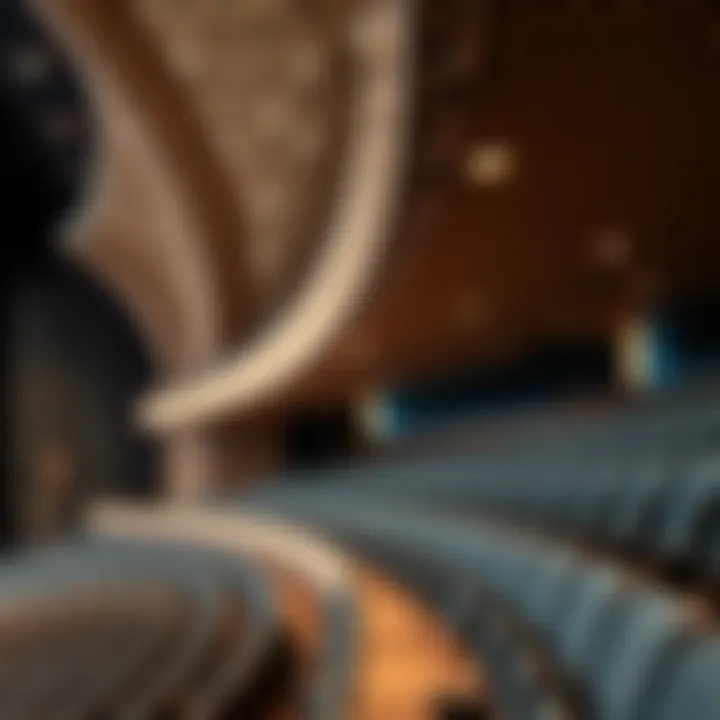
Such a mix not only enriches the guest experience but also fosters an environment where dialogues can spark and evolve. It's in these shared experiences that local narratives intertwine with broader cultural currents.
Community Engagement Activities
Beyond just performances, the Open Theatre actively engages with the community, seeking to forge connections and spark conversations. These activities create a sense of ownership and encouragement among the residents of Dubai.
- Workshops: Through various creative workshops, the theatre invites members of the community to participate in the arts. From acting classes to directing workshops led by experienced artists, participants often walk away with skills that may inspire their own artistic journeys.
- Q&A Sessions: After select performances, audience members have the opportunity to interact with creators, actors, and directors, providing deeper insights into the works being presented and fostering a greater appreciation for the craft involved.
- Collaborative Projects: The theatre often collaborates with local schools and universities, giving young creators the chance to showcase their talents on a professional stage. It nurtures emerging artists, providing them with the platform they need for exposure.
- Cultural Festivals: Hosting seasonal festivals that celebrate the region’s rich heritage allows diverse communities to come together, share their traditions, and learn from each other in a festive atmosphere.
The significance of these activities cannot be overstated. They not only invigorate the local culture, they also ensure that the Open Theatre is more than just a performance space; it's a community hub that fosters creative expression and unity among the diverse populace of Dubai.
"A thriving arts scene is essential for a vibrant society, and our community initiatives at the Open Theatre are designed to empower voices of all backgrounds and create a lasting impact."
Audience Experience
The experience of the audience at the Open Theatre in Dubai is critical for understanding its overall impact on the community. It is not just about attending a performance; it's about the rich tapestry of emotions, interactions, and shared moments that define a live event. The way an audience engages with various elements of a performance can significantly shape their connection to both the art and its social context.
Feedback and reception play crucial roles in this dynamic. They allow the theatre to adapt and evolve. Audience members often express their thoughts through both direct feedback and social channels, providing insights into what resonates and what doesn’t. This two-way communication can foster a deeper sense of community as attendees feel their opinions matter, shaping future programming and events.
Moreover, the impact on local culture and tourism can’t be overstated. When visitors attend performances, they’re not just passive spectators; they're contributors to the cultural dialogue within Dubai. This engagement opens doors for cultural exchange, wherein locals and expatriates come together, celebrating both their differences and shared experiences.
Feedback and Reception
The reactions of the audience to performances at the Open Theatre offer a window into the effectiveness of the programming. Gathering feedback can take many forms, such as post-show surveys, online comments, or casual conversations. For instance, after a theatrical production, participants might gather at nearby cafes to share their insights, creating a buzz that extends beyond the stage.
The theatre has embraced this feedback loop. Often, they’ll stock their website with testimonials. Special nights can also be organized, where select audience members get to meet directors or performers, promoting a more personal connection. Knowing that their voices are heard can encourage repeat attendance.
Impact on Local Culture and Tourism
The influence of the Open Theatre stretches far beyond its immediate audience. As cultural events draw in crowds, they significantly boost local tourism. Visitors arrive not only for the shows but also to soak in what the wider cultural scene offers. For example, a performance might coincide with local art fairs or food festivals, enriching the overall experience for tourists.
- Cultural Exchange: Events hosted at the Open Theatre promote mutual understanding across diverse cultures within Dubai.
- Social Cohesion: These performances create an inclusive atmosphere, helping to bridge gaps between locals and expatriates.
- Economic Contributions: Increased foot traffic in the area often results in higher patronage for local businesses, from restaurants to shops.
In sum, the Open Theatre’s audience experience encapsulates the essence of cultural engagement in Dubai, marrying entertainment with community involvement. This venue is more than just a place to watch performances; it is a vibrant contributor to the city’s cultural fabric and economic heartbeat.
Comparative Analysis with Other Theatres
Understanding the position of the Open Theatre in Dubai requires a careful look at what similar venues offer within the region, as well as insights drawn from international counterparts. A comparative analysis enriches our comprehension of its unique attributes and the value it brings to both local and visiting audiences. By examining these parallels and divergences, we get a clearer view of how the Open Theatre fits into the larger theatrical landscape, not just in Dubai but in a global context.
Similar Venues in the Region
Looking around the Gulf region, several outdoor theatres echo the spirit of Dubai's Open Theatre, albeit with their own distinct flavors and design philosophies.
- Cultural Village Theatre in Sharjah: Nestled amidst an art-centric environment, it focuses on community involvement in traditional arts, but lacks the architectural flair that characterizes the Dubai venue.
- Oman Convention and Exhibition Centre: Featuring an outdoor amphitheatre for various events, it showcases a blend of modernity and tradition but often does not reach the same immersive experience found in Dubai's design.
- Al Ain Oasis Open-Air Theatre: This venue draws attention with its rustic backdrop but is aimed primarily at educational performances rather than a broader cultural programming.
These venues share common goals of fostering culture and community, but they each have limitations in scale or impact compared to what the Open Theatre in Dubai can accomplish, especially in terms of event variety and audience engagement.
Lessons from International Open Theatres
Examining how outdoor theatres operate around the globe can yield valuable insights for Dubai's Open Theatre.
- Theatre Royal, Bath (UK): Known for its historical significance and charm, this venue successfully integrates its surrounding environment with artistic performance. Learning from such integration could inspire initiatives in Dubai, enhancing the way nature and performance coalesce, creating a more immersive experience.
- Teatro Greco, Taormina (Italy): Renowned for its breathtaking views and ancient ambiance, this venue draws massive tourist crowds. The Open Theatre could adopt strategies related to how best to market its stunning backdrop, perhaps leveraging social media to connect with both locals and tourists, enhancing overall attendance.
- Hollywood Bowl (USA): With its unique offerings like film screenings and live concerts, it stands as a prime model on how diverse programming can attract a wide audience. This aspect could benefit Dubai’s Open Theatre, encouraging it to explore multi-genre offerings.
By assessing these lessons, the Open Theatre can adapt to create a more vibrant and multifaceted approach to programming and audience invitations.
In sum, comparative analysis does not simply highlight differences; it reveals opportunities for growth, innovation, and cultural enrichments that can be realized within Dubai's theatrical landscape.
Challenges and Concerns
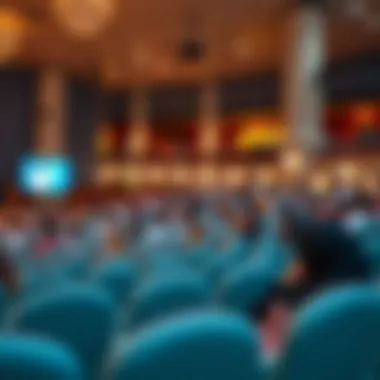
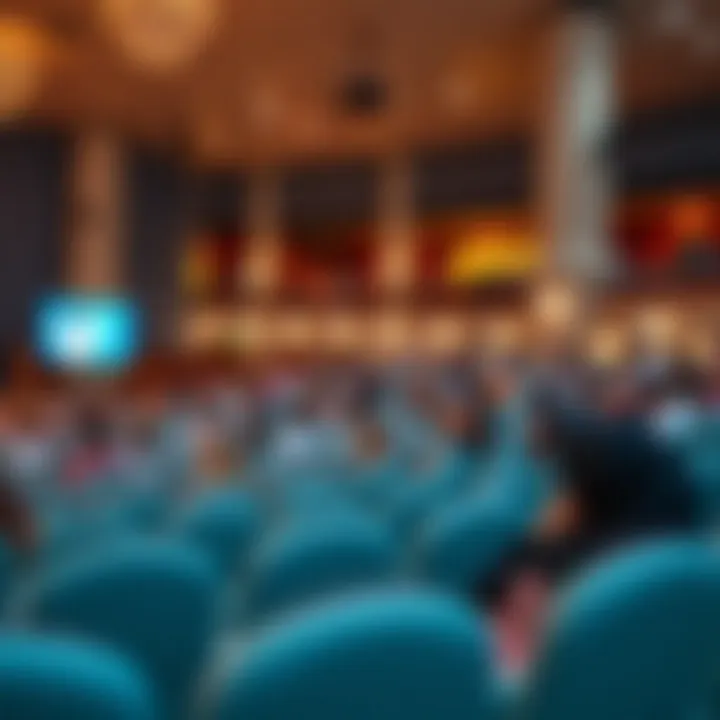
The Open Theatre in Dubai stands as a beacon of cultural innovation amidst the rapid urban development of the city. However, like any ambitious project, it faces a range of challenges and concerns that need to be understood and addressed. This section delves into the critical factors of weather and safety faced by the venue, examining how these issues can affect both performers and audiences alike.
Weather Considerations
It's no secret that Dubai's weather can be as unpredictable as a cat on a hot tin roof. The extreme heat and changes in weather can pose substantial challenges, especially for an outdoor theatre. Summers in Dubai can see temperatures soaring past 40°C (104°F), making outdoor activities uncomfortable if not dangerous for audiences and performers.
The Open Theatre must implement strategies to mitigate these issues. This can include:
- Timing of Performances: Scheduling events during the cooler evenings or in the winter months when the climate is milder.
- Cooling Systems: Installing misting systems, shade structures, or even portable cooling units that help create a more pleasant environment.
- Adaptable Programming: Incorporating various forms of performance, such as silent films with live music, where audiences can enjoy the experience without excessive exposure to the elements.
Organizations running the theatre need to be adaptable, employing flexible programming that takes into consideration the effects of harsh weather. As the saying goes, "It’s better to be safe than sorry"; being proactive about weather challenges helps ensure a positive experience for everyone involved.
Safety and Accessibility Issues
When it comes to open-air venues, safety isn't just an afterthought—it's of paramount importance. The Open Theatre must have robust safety measures in place to handle potential hazards, from crowd control to emergency exits. Large gatherings can bring forth unexpected challenges, requiring effective systems for managing audience flow, especially during events that draw larger crowds.
Accessibility is another critical concern. The theatre should be designed to welcome everyone, regardless of physical abilities. This involves:
- Wheelchair Access: Ensuring pathways and seating arrangements accommodate wheelchair users, allowing for an inclusive experience.
- Signage: Clear, readable signs that guide attendees to different areas of the venue, including restrooms and exits.
- Staff Training: Employing staff trained in handling specific needs, offering assistance where necessary during events.
All these considerations are vital so that every individual can enjoy the performances without concern. A facility that prioritizes safety and accessibility not only fosters community trust but also enhances the overall cultural experience. In the words of Helen Keller, "Alone we can do so little; together we can do so much." This collaboration between various aspects of management ensures the venue is inclusive and safe for all attendees.
In summary, the Open Theatre in Dubai must navigate the challenges posed by environmental factors and focus on safety and accessibility. These considerations will shape the future of the venue, ensuring it can thrive as a central hub of artistic expression in one of the world’s most dynamic cities.
"When challenges arise, it’s not about avoiding them, but rather learning to tackle them effectively and creatively."
For more information on events and initiatives at the Open Theatre, visit the official Dubai Culture website at dubai-culture.gov.ae.
Future Prospects
The Open Theatre in Dubai stands as a beacon of artistic expression and social interaction. Looking towards the future, its prospects shine bright, promising an evolution that not only embraces the arts but also enhances community ties and cultural harmony. Such developments are crucial, especially as Dubai positions itself on the global stage as a cultural hub.
Expansion and Development Plans
Plans for the Open Theatre's future not only focus on expanding its physical footprint but also on diversifying its offerings and enhancing community involvement. Here's a closer look at some of the prospective strategies:
- New Performance Spaces: Authorities are considering adding additional smaller venues within the theatre complex. These would cater to emerging artists and different art forms, thus nurturing talent at various levels.
- Technology Integration: Future designs may integrate advanced technology, such as augmented reality and virtual experiences, aligning with the tech-savvy nature of Dubai. This could create immersive performances that captivate audiences in unprecedented ways.
- Partnerships with Local Artists: There's a concerted effort to collaborate with local creatives and students. This participatory approach not only enriches the programming but also strengthens the art community among aspiring performers, directors, and playwrights.
- Cultural Festivals and Workshops: The focus will also be on hosting annual cultural festivals and educational workshops, drawing experts from different fields. Such additions can provide a platform for innovative expressions while also drawing tourists and locals alike.
"A space dedicated to artistic pursuits fosters not only creativity but also a sense of belonging among diverse communities."
Sustainability Initiatives
Considering the global push toward sustainability, the Open Theatre is poised to make strides in eco-friendly practices. This includes:
- Green Building Practices: Future developments aim to adhere to sustainable building standards, using eco-friendly materials and energy-efficient systems. This could include solar panels and water recycling systems, significantly reducing the venue's carbon footprint.
- Community Environmental Programs: Plans are in place to initiate programs that raise awareness on environmental issues through art. Organizing events that blend performances focused on sustainability can engage audiences in critical discussions about the environment.
- Waste Management Efforts: To minimize waste during events, the Theatre will implement recycling and composting initiatives. Collaborating with local organizations can promote responsible waste practices among patrons.
- Biodiversity Support: Expanding green spaces within the theatre area can help support local flora and fauna. Planting trees and creating gardens can not only beautify the area but also underline the commitment to biodiversity.
Culmination
As we wrap up our exploration of the Open Theatre in Dubai, it’s essential to recognize its undeniable importance not just as a physical structure, but as a beacon of cultural integration and artistic expression. This venue represents more than mere entertainment; it signifies a merging of diverse cultures, echoing the spirit of modern Dubai.
Recapitulating the Theatre's Importance
The Open Theatre stands firmly at the crossroads of tradition and modernity. It serves as a stage for not only local artists but also international performers, enriching the cultural tapestry of the city. By hosting various festivals, plays, and community events, it creates a platform where stories from different backgrounds can be shared, fostering understanding and appreciation among the audience. This theatre has significantly contributed to the social fabric of Dubai, encouraging dialogue through art.
- The Open Theatre promotes:
- Cultural Exchange: Performances invite spectators from all walks of life, blending cultures and traditions.
- Artistic Innovation: By embracing both classic and contemporary art forms, it inspires new creative endeavors.
- Community Engagement: Local artists often showcase their work here, enriching the community’s artistic landscape.
Encouraging Continued Support for the Arts
Support for the arts is crucial for sustaining the vibrancy of any cultural scene, including that of Dubai's. The Open Theatre is more than just a venue; it represents an investment in the future of creativity. Encouraging patrons, sponsors, and local businesses to support ongoing programming ensures that the theatre remains a lively hub for artistic expression.
- Potential benefits of supporting arts initiatives include:
- Economic Growth: Arts and culture can drive tourism, ultimately contributing to the local economy.
- Enhanced Quality of Life: Access to diverse performances and cultural experiences enriches community life.
- Educational Opportunities: Collaborations with schools and universities can foster talent and provide valuable learning experiences for youth.

